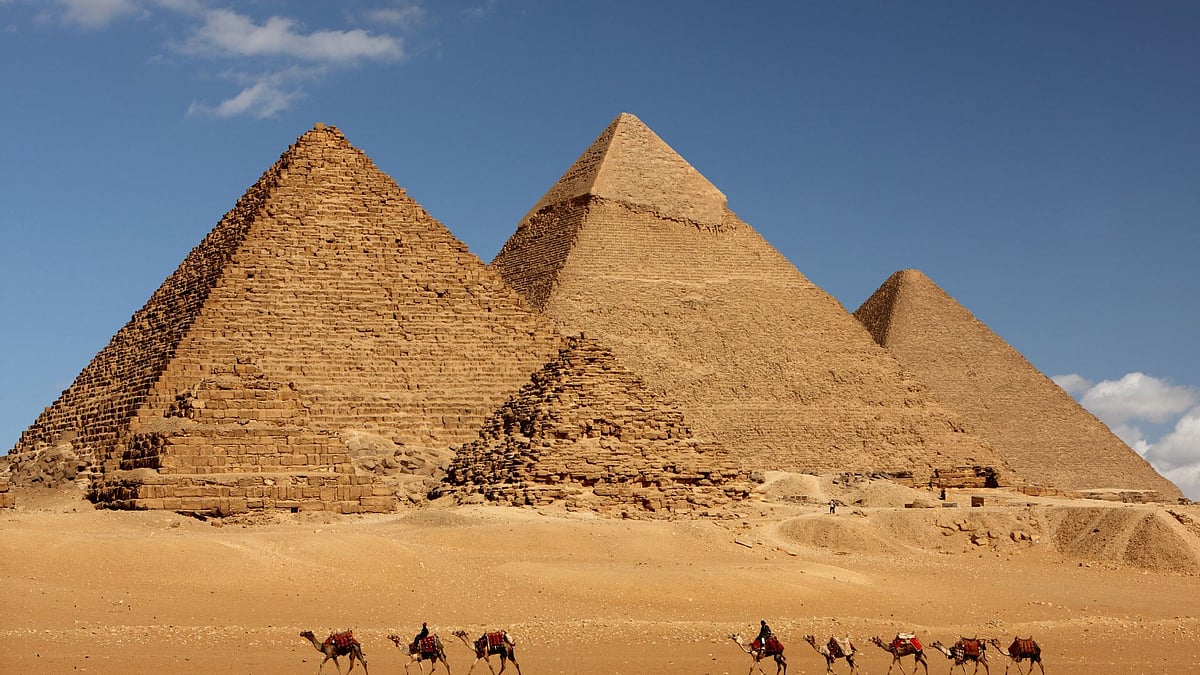The pyramids of Egypt were always a mystery but little did we know that there is so much to be discovered yet. Various theories have been surfacing around after a team of researchers revealed a surprising information.
Researchers have uncovered a massive underground system beneath the Pyramids of Giza using advanced radar scanning technology. Scientists Corrado Malanga from the University of Pisa and Filippo Biondi from the University of Strathclyde utilized Synthetic Aperture Radar (SAR) to map the subterranean landscape. Their analysis identified a sprawling network extending approximately two kilometers beneath all three pyramids, challenging long-standing theories about their purpose and construction. The story behind how the pyramid was built still isn’t believable and this new information has assured the internet that there is much more to what meet the eye.
Complex system beneath Khafre Pyramid
One of the most striking findings was located beneath the Pyramid of Khafre, the second-largest pyramid on the plateau. Researchers detected five identical structures near its base, each containing multiple levels interconnected by a network of geometric pathways. Further analysis revealed eight deep cylindrical wells, each surrounded by descending spiral pathways reaching astonishing depths of 648 meters. At the lowest levels, these paths led to two massive cube-shaped structures, each measuring 80 meters per side, suggesting an advanced and intentional underground design.
Were these tombs an advanced energy system?
For decades, Egyptologists have upheld the belief that the pyramids were primarily royal tombs. However, the newly uncovered structures add weight to alternative theories that suggest the pyramids may have served a more complex function. Some researchers have proposed that they were part of an ancient energy system. Notably, the ideas of Nikola Tesla and Christopher Dunn align with these new findings. Tesla speculated that the pyramids could have harnessed Earth’s natural energy, while Dunn, in his book The Giza Power Plant, argued that the Great Pyramid functioned as a machine converting vibrations into usable energy.

Ongoing debate on pyramid origins and purpose
Mainstream scholars maintain that the pyramids were constructed around 2500 BCE using traditional methods, relying on human labor and simple tools. However, the precision of the structures, along with the newly discovered underground network, has fueled speculation that the pyramids’ true function may extend beyond mere tombs. The discovery has reignited debates about their construction methods, with some researchers questioning whether ancient civilizations had access to lost or advanced knowledge.
The team behind these findings, known as the Khafre Project, has expressed interest in conducting further excavations to explore the underground structures in greater detail. However, gaining permission to dig remains a significant challenge. Egyptian authorities have historically been cautious about allowing research that contradicts established historical narratives. Despite these challenges, researchers remain hopeful that future investigations will shed new light on the mysteries of the Giza Plateau.
This groundbreaking discovery has opened new avenues for exploring the hidden history of the pyramids, leaving experts and enthusiasts eager for further revelations.
